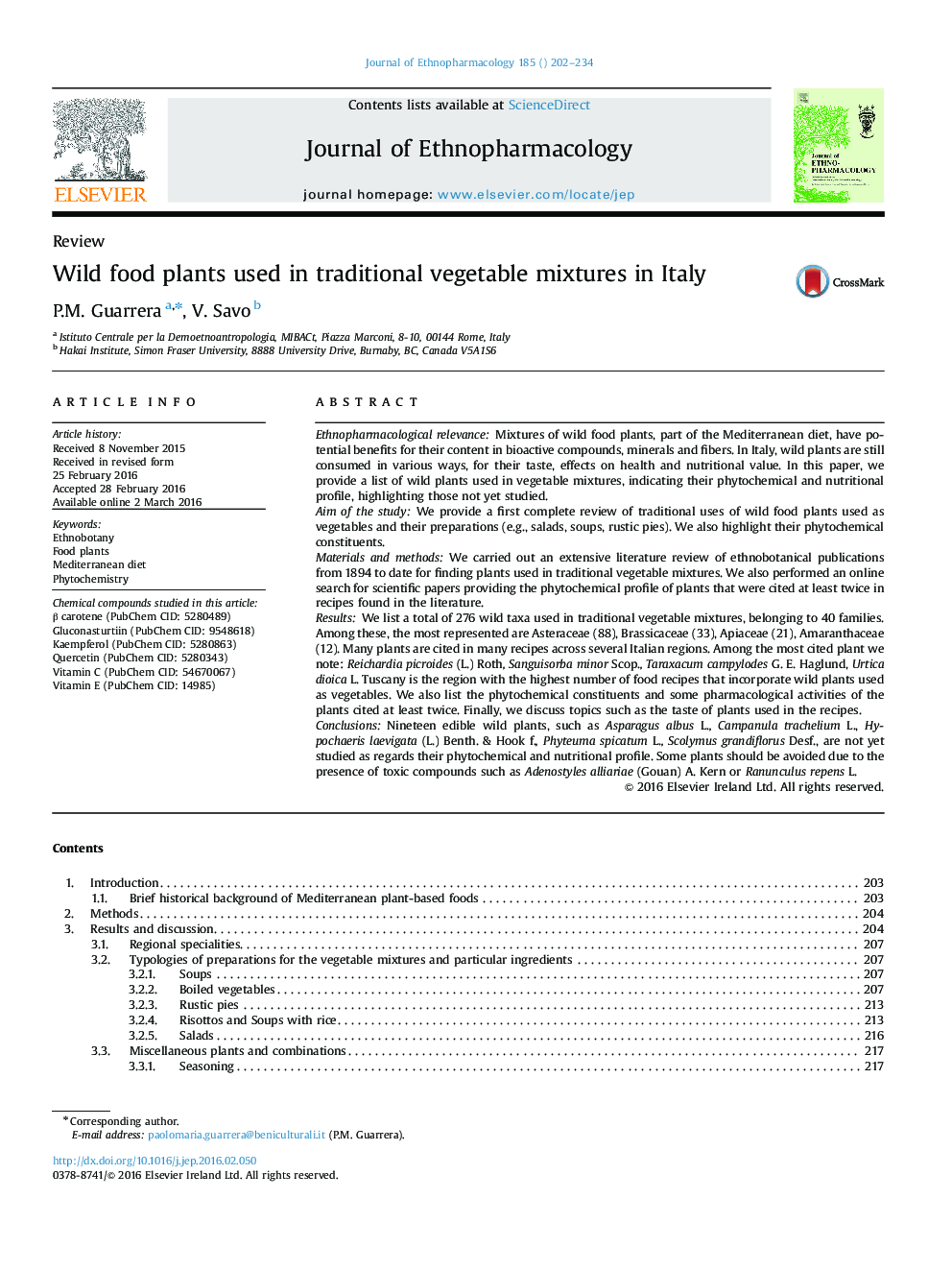| کد مقاله | کد نشریه | سال انتشار | مقاله انگلیسی | نسخه تمام متن |
|---|---|---|---|---|
| 2544822 | 1560377 | 2016 | 33 صفحه PDF | دانلود رایگان |
Ethnopharmacological relevanceMixtures of wild food plants, part of the Mediterranean diet, have potential benefits for their content in bioactive compounds, minerals and fibers. In Italy, wild plants are still consumed in various ways, for their taste, effects on health and nutritional value. In this paper, we provide a list of wild plants used in vegetable mixtures, indicating their phytochemical and nutritional profile, highlighting those not yet studied.Aim of the studyWe provide a first complete review of traditional uses of wild food plants used as vegetables and their preparations (e.g., salads, soups, rustic pies). We also highlight their phytochemical constituents.Materials and methodsWe carried out an extensive literature review of ethnobotanical publications from 1894 to date for finding plants used in traditional vegetable mixtures. We also performed an online search for scientific papers providing the phytochemical profile of plants that were cited at least twice in recipes found in the literature.ResultsWe list a total of 276 wild taxa used in traditional vegetable mixtures, belonging to 40 families. Among these, the most represented are Asteraceae (88), Brassicaceae (33), Apiaceae (21), Amaranthaceae (12). Many plants are cited in many recipes across several Italian regions. Among the most cited plant we note: Reichardia picroides (L.) Roth, Sanguisorba minor Scop., Taraxacum campylodes G. E. Haglund, Urtica dioica L. Tuscany is the region with the highest number of food recipes that incorporate wild plants used as vegetables. We also list the phytochemical constituents and some pharmacological activities of the plants cited at least twice. Finally, we discuss topics such as the taste of plants used in the recipes.ConclusionsNineteen edible wild plants, such as Asparagus albus L., Campanula trachelium L., Hypochaeris laevigata (L.) Benth. & Hook f., Phyteuma spicatum L., Scolymus grandiflorus Desf., are not yet studied as regards their phytochemical and nutritional profile. Some plants should be avoided due to the presence of toxic compounds such as Adenostyles alliariae (Gouan) A. Kern or Ranunculus repens L.
Figure optionsDownload high-quality image (377 K)Download as PowerPoint slide
Journal: Journal of Ethnopharmacology - Volume 185, 5 June 2016, Pages 202–234
